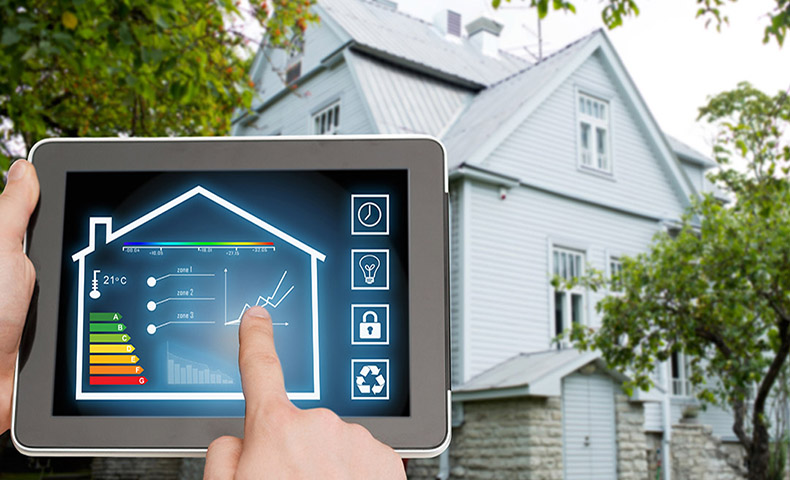
After much consideration and review of your ever increasing electricity bill, you have come to the conclusion that solar power is the right choice for you. Now you’ll be part of the renewable energy revolution that’s been sweeping the country since 2014, providing power to nearly one million homes. So what’s next.
The following are some things to check as you embark on your solar journey.
Cash or loan?
Will you be paying out of pocket for the domestic solar power system or are you planning on getting a loan? This will affect how soon you can reach the payback period in savings to cover the cost of the installation. The best bet is to have the money available. A standard system for an average home costs between $11,000 - $14,000. However, if you can't cover the entire cost on your own, you will want to speak with your bank about some type of financing.
How’s your roof?
How old is it? Are there are leaks? If your roof is in need of repair, you may want to take care of it before looking for a solar installer to start work on your home solar energy system.
The roof needs to be in good condition before they put the solar panels on it. If you wait to repair your roof until after the photovoltaic (PV) modules are already on it, it could be more problematic and expensive. Most solar panel installations will easily accommodate roofing material repairs or replacement but if your roof is already 15+ years old you might consider re-roofing before a solar installation.
Which way does the roof point to?
In the Northern Hemisphere, the energy’s sun comes from the south, so your solar panels must be pointed in that direction. If your roof does not have a southern exposure or is limited, this will also play a role in how many modules you can place on it and how much energy you can produce. If there is plenty of space, you might opt for a ground-mounted solar installation.
How much shade is there?
If there are trees covering most of the property or the area where you’re going to put the solar panels, you might want to trim them or cut a few of them - if necessary - so that there is nothing obstructing the sunshine the modules receive.
Contact a qualified solar installer
A reputable solar installer should have the qualifications to perform this work in your area and the experience of past projects to deal with the permit process. The contractor will take care of the work and guide you in terms of incentives and rebates available to you to offset the cost of the installation, recommending a specific site for your solar panels, a design for the solar array and what should be the size of it.
What size do you need?
You want to make sure your solar array covers most - if not all - of your energy needs. If you don’t know what the correct size of your solar power system should be, you can easily find out with the Hahasmart price checker. Just provide your address and your average monthly utility bill and you’ll get the actual price of solar panels and inverters - which are the most critical parts of a solar powered system - as well as provide you with an estimated cost of installation based on thousands of completed solar projects in your area.
They’ll even provide you with an estimated buyback period, the point where the electricity savings achieved with your solar array cover the purchase of your residential solar panels and your system becomes free.
In addition, they’ll connect you with their installer network to get your residence equipped with solar power as possible.
Ask about net metering
Once the solar panels are installed, and before the utility gives the green light to turn them on, you should contact them and ask about net metering. Each utility is different and the rates they pay for the excess energy you send to the grid varies, but if it’s available, you need to know these details to see how it will offset the energy you buy from them at night.
How does the inverter work?
Once everything is up and running, ask your installer to explain how the solar inverter works, what each of the measurement it reports mean and how to spot problems. You want to regularly check that your domestic solar power is working and producing electricity.
What about the warranties?
Almost all solar installers offer warranties of 10–20 or more years, and a panel can keep producing electricity for 25 years or more. However, the solar installer should also explain all the warranties associated with your home solar energy system. How long are they good for? What do they cover? Who is responsible for the costs of removing faulty panels and installing and replacing new ones?
HahaSmart Blog - More Solar Tips and Guide
HahaSmart News - Stay Informed
Your Solar Incentives - See Credits and Incentives in Your Area
Check Your Home's Solar Price - See How Much You Save
Register Now - Unlock The Lowest Solar Prices in Your Area


Input your address to see if it is solar friendly and how much you can save with solar.
Great. Your address is perfect for solar. Solar incentive is still available. Select monthly utility cost and calculate the size of solar system you will need now.
| kw System size | years Payback period | Lifetime savings |
No money down, 100% finance is available.
|
|
Check the price of solar panels in your area in a matter of seconds! |
Comments